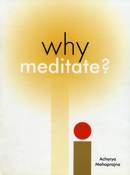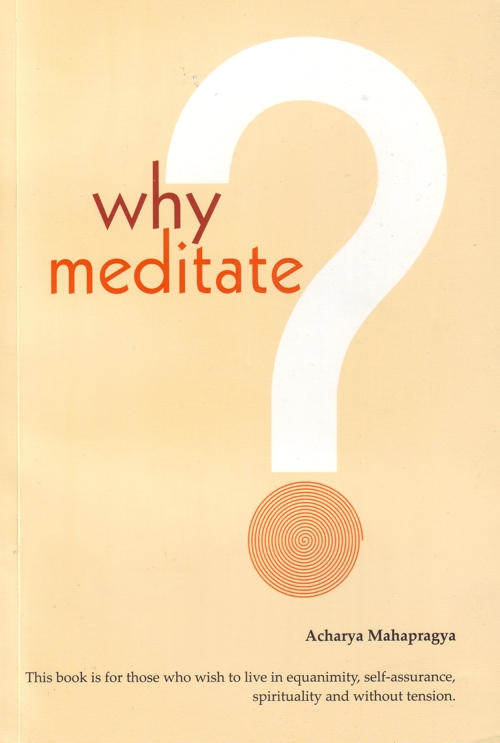
 Kayotsarg is the best key to good physical health. We have prescribed a technique of meditation for physical health, on the basis of Kayotsarg called Kaayaakalp. Ayurveda has been practicing the technique of Kaayaakalp. If a man becomes severely ill or becomes quite old, he loses the power to work. The ancient Ayurvedic doctors used to make such people practice Kaayaakalp. Ayurveda has a very rigorous procedure for Kaayaakalp. In Ayurveda Kaayaakalp is put into practice along with medication and spiritual practice. Preksha meditation has a systematic schedule for it.
Kayotsarg is the best key to good physical health. We have prescribed a technique of meditation for physical health, on the basis of Kayotsarg called Kaayaakalp. Ayurveda has been practicing the technique of Kaayaakalp. If a man becomes severely ill or becomes quite old, he loses the power to work. The ancient Ayurvedic doctors used to make such people practice Kaayaakalp. Ayurveda has a very rigorous procedure for Kaayaakalp. In Ayurveda Kaayaakalp is put into practice along with medication and spiritual practice. Preksha meditation has a systematic schedule for it.
The first step of the procedure of Kaayaakalp is - lie down in the position of Kayotsarg (relaxation). In the relaxed posture, focus your attention on your big toe of your right foot. Give an autosuggestion to relax and experience it relaxing. Now relax all your other toes, one by one. Loosen all the muscles of your toes, sole, heel and ankle and suggest to yourself two, three times, �They are becoming healthy�. In the same way, concentrate on each and every organ, practice relaxation over there, and autosuggest to them, �They are becoming healthy�. Now relax your calf muscles, knee, thigh muscles and buttocks. Stay focused there for two to three minutes. Autosuggest to them, �Toxins are coming out of my body and it is becoming healthy�. Feel all the infectious and harmful particles going away and feel yourself completely healed in each part. Similarly, practice Kayotsarg on your left foot, from toes to waist and suggest the same. Now relax inside the abdominal cavity, each and every internal organ: liver, stomach, pancreas, gall bladder, duodenum, small intestine, colon and kidneys. Experience that they are relaxing. By autosuggestion, feel that they are becoming healthy. Now relax your lungs, heart, shoulders, hands, neck, facial muscles, each and every sense organ, forehead and brain. Experience their relaxation. By autosuggestion, feel that they are becoming healthy. Along with Kayotsarg, concentrate on each and every organ and simultaneously practice long breathing. Your breath will not reach there, as our breath can't go beyond the sub-diaphragm region, but by your gentle suggestions, the energy of vital force will reach there. Let your vital force spread there. Feel the expansion of Prana in that part of your body. Wherever the vital energy reaches, enough electric force will be supplied and this will spur the exit of alien, infectious particles.
You will be able to feel the healthiness of the body. This is the first step of the technique of Kaayaakalp.
The second step of Kaayaakalp is the practice of Preksha Meditation with Leshya Dhyan (colour meditation). According to Hathayoga and Swarodaya Science, our body is made up of the five elements. They are earth, water, fire, air and space. Also, our body is made up of seven basic elements, which is why it is sometimes termed an image of seven elements. All these basic elements have their own colours. From the legs to the waist is the region of the earth element, whose colour is yellow. Above this, and up to just below the bellybutton, is the region of the water element, whose colour is white, like water. The complete area of the digestive system, all around the bellybutton, is the region of the fire element, whose colour is reddish yellow, like fire. The area of our heart or where the centre of bliss is located, and this is the region of the air element, whose colour is blue. The part above the neck is the region of the space element, whose colour is smoky: neither completely grey, nor completely white. It is a mixed kind of colour. These are its five colours. We must practice Kaayaakalp with long breathing and visualize these colours. While concentrating from toes to the part of lower abdomen, imagine and visualize white colour there. At the centre of bioelectricity, in and around the bellybutton, feel the radiance of pink colour. While meditating on the centre of bliss, visualize blue colour. Above your neck, experience and imagine grey colour.
The third step of Kaayaakalp is the practice of chanting Mantras. Practice the mantra of Arham. After slackening and relaxing your legs completely, start chanting the mantra Arham three to nine times. In your initial practice, do it only thrice. Focus your attention on your waist and chant Arham. In this manner, concentrate on each and every part of your body, relax it, and feel the effect of the faithful chant of Arham mantra, while focusing on these parts.
Thus, the procedure of Kaayaakalp is accomplished in three steps. The first step is relaxation with expansion of flow of vital energy. The second step is visualization of colours, with autosuggestions of good health. The third step is the chanting of Arham mantra with the resolve of good health.
These three steps together complete one cycle of Kaayaakalp. It may take half an hour. If practiced with perfection, it may take about 45 minutes to one complete hour. This indeed proves to be a very powerful procedure for our optimal health.
Where does malfunctioning occur? Wherever the transmission of vital energy is blocked, or where the electric force from the luminous body does not flow as required, that part of our body gets indisposed. It is prone to sickness. A man had a paralytic attack. What made him paralytic? The reduction in the flow of vital energy disabled him. Even according to medical science, wherever the circulation of blood is lessened or cut down, pain develops. The effect of imbalance of vital energy is far more dangerous than the effect of reduced blood supply. Our body parts do not have the potential to work on their own. Each and every part of our body functions by the power supplied by the vital energy or the luminous body. If the vibrations of the luminous body do not reach there, it would stop functioning.
If we reflect upon physical health, two situations present themselves before us. Take the first case of a man taking medicines for regaining good health. If you think deeply, you realise that the medicine is that which strengthens his luminous body. The luminous body thus works from outside as well as from within. Aataapnaa (taking energy of the sun, sunbathing) has a very important place in Jain spiritual practice. Aataapnaa means taking/absorbing the heat of the sun in standing, sitting or prostrate posture, facing towards the sun. Bhagvan Mahavira himself practiced this technique. Many other Acharyas also practiced this. It was a prevalent practice in the olden days. In the morning, select a place at some altitude and practice Kayotsarg either by lying down, standing or by sitting. Try to absorb the suns rays falling on your body and experience, by autosuggestion, 'The sun's rays are entering my body and strengthening my luminous body.' This is a very important technique for the development of intuitive power.
We should also think about how our powers are used up. A highly sensual person, who exceeds the use of his senses, uses a great deal of power of his luminous body. Lust stimulates a person so much that his breathing becomes faster and hence, he wastes more energy. A man who is gluttonous and is very attached to food, also wastes a lot of luminous energy. People today are mostly engaged in watching TV. They don't even come to know how much energy they are wasting. Because of that loss of luminous energy, we see even small kids wearing spectacles. Similarly, negative thoughts also deplete our luminous/vital energy. The negative thoughts of mind and enjoyment of sensual objects drains a lot of luminous power and weaken our immune system. Thus, a man catches diseases very easily.
 Acharya Mahaprajna
Acharya Mahaprajna
 Copyright by Acharya Mahaprajna ©2005
Copyright by Acharya Mahaprajna ©2005